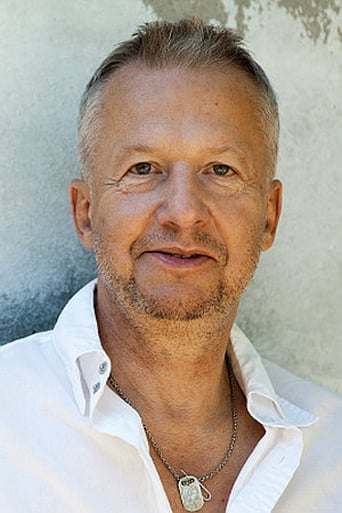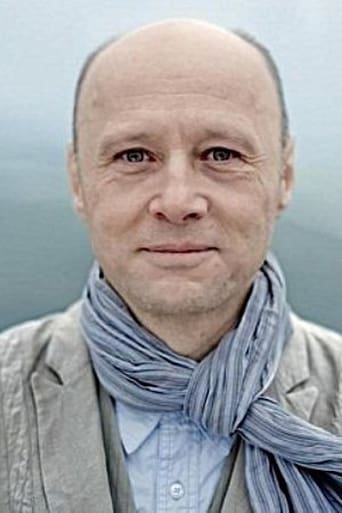Smartorhypo
Highly Overrated But Still Good
Matrixiole
Simple and well acted, it has tension enough to knot the stomach.
Deanna
There are moments in this movie where the great movie it could've been peek out... They're fleeting, here, but they're worth savoring, and they happen often enough to make it worth your while.
Jakoba
True to its essence, the characters remain on the same line and manage to entertain the viewer, each highlighting their own distinctive qualities or touches.
besherat
"Illusions "are the latest film by famous Polish director . An extraordinary film achievement that has rounded its imposing opus.
The film deals with a topic that is current at all times, that is, how to remain consistent and how to confront the region of a totalitarian and captured state.
We all know this well, because from this form we did not move even for inch. If you have not approved it, if you are not applauding, if you are not similar, if you have your own opinion, the state will endeavor to show you its power to bring you under the livelihood line, as director magnificently presented in this biographical film about Polish painter .
Extremely strong frames that plasticize all the misery of human life. Film for each recommendation.
Kirpianuscus
this is the basic feeling. it is a film about present. not only for remind the Communist regime profound traces in every day life. but for the dictatorship of bureaucracy. for the desire of unanimity. for the role of person as tool. and for the politically correctness who is not real far by the Communist dictatorship. it is , in same measure, a significant last word of Wajda. not only as legacy. but as remember of his themes, message, precise exposure of the action of the evil, crash of the artist, forms of freedom out of political rules. a film about present, maybe, only from the perspective of an Easter European.
Ruben Mooijman
'After Image' shows the struggle of one man against a system. The man is Wladyslaw Strzeminski, a Polish avant garde painter, and the system is postwar communism. Slowly, we see the man being destroyed by the system. Witnesses stand by, but are unable to do anything. That's how powerful totalitarianism is: any opposition, even from a harmless painter, is crushed.In the very first scene, we see Strzeminski in a beautiful green meadow, teaching his pupils how to paint a landscape. When a new pupil presents herself, he literally rolls down the hillside to meet her - in spite of his disabilities: he misses one leg and one arm. Strzeminski is happy and upbeat. During the film, this proud man slowly transforms into a human wreck. At the end, he is no longer able to stand on his feet, let alone roll down a hillside.Bit by bit, the communists make his life impossible. In a visually stunning scene, all light in his apartment turns red, because of a giant Stalin banner which is attached over his window. Furious, because he is no longer able to paint in natural daylight, he tears the banner with one of his crutches. It's the start of a fight against the system that turns out to be futile.Director Andrzej Wajda, who died last year, shows Strzeminski as a man who lives for his art, and for nothing else. Even his teenage daughter is forced to move to an orphanage, because he doesn't seems to be interested in raising her. Wajda shows Strzeminski's weaknesses, but also his opponent's doubts. Many of them somehow sympathize with him, but are unable to show support without risking their own position. An example is the manager of the local museum, who cannot display his paintings, but carefully keeps them in storage.Parallel with Strzeminski's decline, we witness also Poland's transformation from a proud nation into a Soviet-dominated satellite state, where communist propaganda is everywhere and the quality of life deteriorates rapidly. In one scene, Strzeminski is turned down by a shop selling painting materials, because his membership of the artist's union is withdrawn. He hides his disappointment and takes his daughter to the cinema. But there he finds out he has to watch Soviet propaganda. Disgusted, he leaves the theatre.'After Image' shows an important episode of Poland's artistic history. At the same time, it is a warning against any totalitarianism, and an ode to artistic freedom.
dromasca
It's very difficult to say Farewell. It's very difficult to make a Farewell movie. I do not know if Andrzej Wajda knew that 'Afterimage' was to be his last movie. He undertook and involved himself in this film with the same passion, rigor and attention to the detail, with the same mastering of the art and science of film-making as ever. He also did not abandon the major theme of his cinema - the history of Poland seen as a subset of the history of Europe and of all mankind, and as a collection of the stories of the men who made it.There is one major difference though. Many of his previous films focused on political characters, they were about men who changed history, about victors at least at the historical scale - Danton, Walesa - even if they sometime paid with their lives. The hero of this film, the avant-garde Polish artist Wladyslaw Strzeminski was defeated by history, and the film is the story of his defeat, of his physical but also moral decay. It's a story quite typical about the manner Communist dictatorships in Eastern Europe treated their artists, and even if I did not know anything about him before this movie, his story was well known to me as the same fate (or worse in some cases) was imposed on artists who did not compromise in Romania where I was born and I lived half of my life. We see him at the beginning admired and valued as a teacher and artist, he also was a companion of modernist artists who were associated with the Russian revolution, but this did not help him either. He was not an anti-Communist, but he valued true art, could not accept enrollment of art as a tool for propaganda and the norms of the dogmatic 'realism', and his refusal to compromise cost him his teaching position, his membership in the artist's union, the very possibility of painting. The humiliating tentative to find a way to survive had no chance, the regime was still in the Stalinist period and crushed all opponents according to the principle 'the one who is not with us is against us'. Even the help and support of a handful of students who stood by their beloved teacher and mentor could not save him.The lead role is played with a lot of restraint and dignity by Boguslaw Linda, his flame is interior, he shows the artist far from being a flawless person, actually sharing some of the guilt of not being able to maintain his family and especially help his teen daughter (exceptional acting of 14 years old Bronislawa Zamachowska). There are many very well constructed scenes, some of them full with details bringing back to life with controlled anger that dark period of transformation, when Poland and Eastern Europe were postponing hope for a few decades and were transitioning from one nightmare to another. Wajda's last film is not a testament, it's an integral part of his opus of work.






